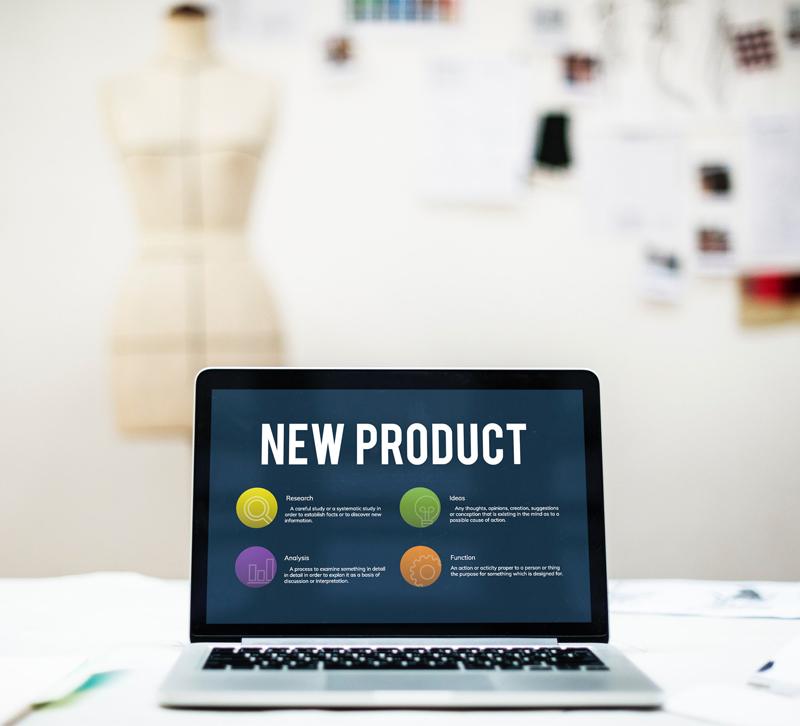The majority of people still prefer to shop for furniture in stores, according to Morning Consult, and more than likely, they feel the same way about lighting.
But retailers, don't get comfortable.
Home goods and decor is one of the fastest growing sectors in e-commerce, which itself is growing at a faster rate than the whole retail industry year over year. As we've covered this year, e-commerce is growing in sectors where most thought it would never touch, putting retailers like Claire's and Toys "R" Us out of business, and that includes furniture and lighting. Don't believe it? Just look at Amazon's private label furniture.
If you don't sell online now or used to but then dropped it, know that there is still a ton of opportunity available online — you just have to modify how you think about e-commerce. Here's how to rethink e-commerce for your furniture or lighting showroom.
Start small and study
When thinking about your online store, don't immediately assume you need to upload everything on your sales floor to your online store right away. It's a lot of work to do so, and if you don't have the manpower and you don't want to employ freelancers (though they could certainly help you with your e-commerce strategy), you will end up doing more work than it's worth.
Instead, come up with a product strategy. You might decide to sell decorative accessories, wall art and table lamps online, or you might only sell your best sellers online. There are pros and cons for both strategies, but however you want to sell, you must include detailed product descriptions, dimensions and at least two photos of the product to give viewers a good idea of what the product will look like in person. This will lessen the chance for returns, though you do still have to have a return policy. Post that policy on each product page clearly where people can see it. This will lessen your headaches down the line.
You do not have to upload your entire store. If you're just starting out, take your 50 best-selling products or 50 small, easy-to-ship products that represent the vibe or feel of your store.
As you start selling online, track what you're selling and how much of it. These stats will help you determine what's working, what's not and what you should try to do in the future.
Be ready to stock
No one wants to place an order only to find out the product is out of stock. That's the easiest way to lose customers.
As you're deciding what to sell online, keep your stocking capabilities in mind. Do not post anything for sale online that you cannot ship within a day or two. Like it or not, Amazon and other big-box brands offer two-day and even same-day shipping now, so more customers have come to expect those times, as we learned earlier this year. You don't have to offer same-day shipping just yet, but having products sold online in stock at all times ensures you won't have to turn away customers.
If you do want to post products that you don't always keep in stock, you must commit to monitoring your warehouse and what you have in stock. E-commerce can be tricky because orders can come in at any time, and it can be difficult to track in real time how much you have of any one product. For this reason, start small when selling online and develop a system to help you get used to this kind of tracking.
Look for omnichannel solutions
Nordstrom's success can be attributed to a number of factors, but perhaps its biggest asset right now is its commitment to omnichannel shopping. Basically, it means that no matter how customers chose to shop with Nordstrom — in-store, online, on their phones — their orders and information will translate even if they change how they'd like to shop from in-store to mobile. It allows for a more seamless experience, and as a customer's needs or preferences changes, sometimes within a single day, Nordstrom is ready to assist, even allowing customers to return products simply by leaving them in front of the store.
Your retail store can borrow from Nordstrom by adding an in-store pick-up option. This can be especially favorable if you sell small accessories and hostess gifts in your showroom. Customers can quickly browse your selection online, make a choice and pick it up on their way home from work or to a party.
Little features like this go a long way with consumers who expect options.
Invest in SEO and social media marketing
Seven years ago, organic reach on Facebook was far more powerful than it is now. Businesses could post to their pages, and it was safe to assume that most followers would see the post show up on their newsfeeds. That isn't the case anymore. Just post to your own page and see for yourself. Your posts will only reach a small fraction of your followers unless you pay to boost the post or run an ad on Facebook.
That's the state of the internet right now. Organic reach is not what it used to be on Facebook, Google and most other platforms on the internet. If you really want to reach consumers, then you are going to have to develop a good digital marketing strategy and invest in advertising on your preferred platform.
It's never too late to learn digital marketing, so start with our guide to developing a strategy. You can also subscribe to sources such as Search Engine Land and Social Media Examiner to familiarize yourself with the lingo. It will seem foreign at first, but if you keep at it, you'll find yourself better for it.
Home goods and decor remains one of the fastest growing segments in e-commerce right now. Your retail store can get in on the action if you think strategically about how to differentiate yourself and invest in digital tools that will help you grow.
Be honest: What do you struggle with the most when it comes to e-commerce? Share with us in the comments!
Photo: rawpixel.com from Pexels







